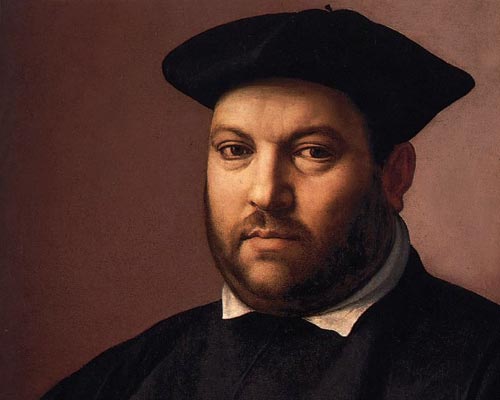
“Portrait of a Gentleman” by Ridolfo Ghirlandaio (Part copy of the original)
Renaissance painting can teach us a lot about portraiture.
The way we look at people is a constant in time.
Renaissance Portraits represent the artists view at the time. Our photographs represent our view today. Artists paint to bring out features. We can see lessons in that emphasis to help our portraiture in photography.
The Renaissance painters created a culture of portraiture leaving us with a superb legacy. Their realistic portraits were a study of light and shadow – the fundamentals of art. their study specialised in the face. They wanted the lines and shadows to be flattering, portraying the features in the best possible light – literally. Today we have a lot of portraits by masters who knew how to see light and shadow and pick it out.
Here are five things that we can look at in Renaissance portraits to apply to our own photographic work.
The direction of light
To make the best of the features of our portrait sitter we need to understand light direction. Renaissance portraits tend to have slightly exaggerated shadow lines. As a result we can see which direction the light is coming from. Once we have worked this out we can apply the principle to our own shots. We can place the sitter relative to a light source or move the lights.
Light intensity
In general Renaissance portraits have no highlights on the face. Modern flash and lighting techniques tend to produce harsh, hard lights unless we carefully control it. The Renaissance images sometimes have bright light, but the painters left them as bright, not white. Spots of white, blown out light, are very distracting for the viewer. We should be on the lookout for the brightest spots try to reduce the light intensity. In films the make-up reduces skin reflection. When that is not practical we can instead just use reduced lighting, or diffusion screens.
Angle of incidence
In the picture above there’s quite a strong shadow line on his forehead under the hat line. This is because a hard light is striking the face slightly from above and to the side, not straight on. This imitates the sun, or a high point of light – say, through a window. By looking at the shadows on the face we can see how the light is angled in addition to it’s direction. Different angles of lighting and the shadows responding to it give clues about how the scene is lit. An evening scene with a lamp would show a lower angled light and it would be more yellowish. An evening light would be more straight from the side and tend to be redder. Bright daylight will tend to be from a higher angle. Looking at the angle light strikes the face, and the type of shadows, helps you to imagine how your own portraits could be set up.
Hard and soft light
Sometimes the old masters cheated or messed about with light to emphasise something on the face. In the picture above you will see quite a hard line of shadow down the shadow-side of the nose. This hard line of shadow comes from a harder light. Yet on the cheeks the light is soft – the shadows have a gradual tenancy toward darker areas rather than a hard line. In general, it is difficult to mix hard and soft light lines like this in real life. It is interesting because here it shows how the face is well defined. I think this is because the artist was trying to define a quite rounded face. Too rounded and the face becomes feminine. To avoid that feminine look he has put one or two harsher, sharp lines on the face to bring out the masculine side. For your portraits remember that hard light brings out masculinity and soft light brings out feminine features.
Eyes
Eyes are something of a study for artists and photographers. They establish life and vitality as well as a rapport with the viewer. If you can mark the direction of the eyes so the person in the portrait is looking directly into the viewers eyes then you capture the viewers attention. We are transfixed by eyes that look at us. In a very clear picture the pupils gives us a clue. In most pictures the catchlights in the eyes indicate the direction light in the face, the direction they are looking and also provides vitality and expression in the eyes. In the portrait above the catchlights are small, the picture is reduced in size and low resolution. But the catchlights are present. Have a close look at them. When working your portraits make sure your catchlights are a good shape and are true to the direction of the main light.
Here is a fun exercise
To improve your portrait skills pick a Renaissance portrait. Try to create a modern version of it. Look carefully at the light direction, intensity, angle, relative hardness/softness and the eyes. See if you can get someone to sit for you while you reproduce the light, shadow, catchlights and the pose. Work on the ways that the shadows lie on the face. See how the shadow graduation works. Soften and harden the light to reproduce that softness.
Here is a link to the Google image pages for Renaissance Portrait Paintings 
This is an exercise in light control. You can do it with natural light. You can even do it with a table lamp (although it may create a colour-cast). The idea is two-fold. First, get control of the light. Second, try to reproduce classic portraiture pose. Both are fun, and both will teach you all sorts of lessons about what in the light makes people look the way they do.





